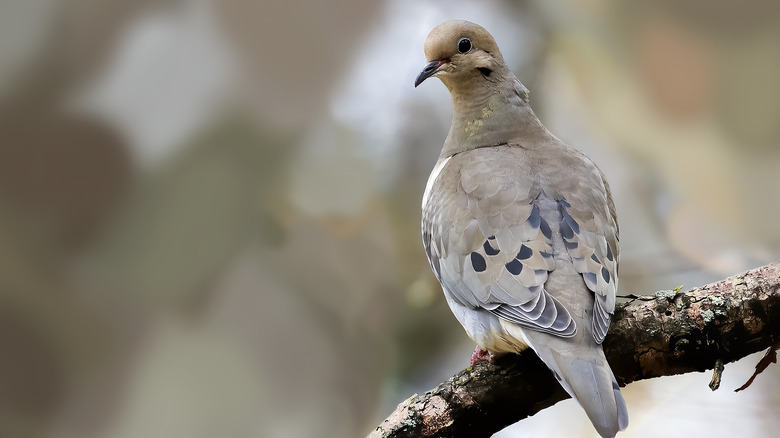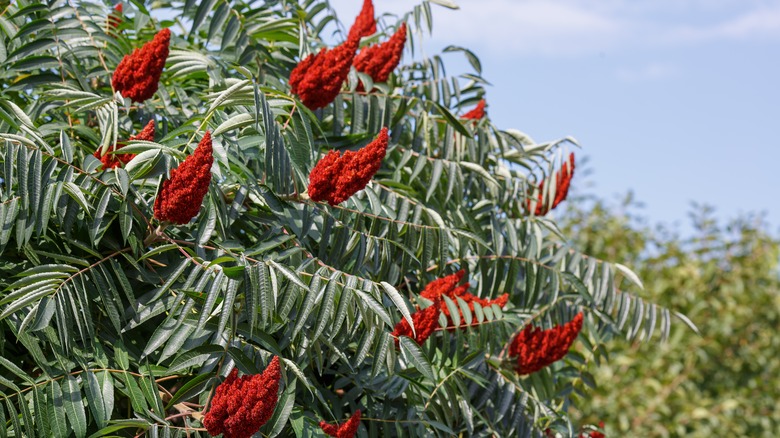The Fresh-Smelling Plant That Will Bring Mourning Doves To Your Yard
Mourning doves are beautiful native birds that just so happen to love sumac. Sumac is a gorgeous, versatile native shrub that plays a vital role in our ecosystems and has a long history of use. With leaves that smell like lemon when crushed and edible berries that make a lovely sumac-ade (a lemonade-like drink made traditionally from sumac berries), this native specimen will add a lush look to your yard and provide you with a unique food source! You may recognize the name as a common culinary spice in the Middle East. There are over 150 sumac species worldwide and 14 native to the U.S., so there are a few different varieties to choose from for your yard. Some of the most popular species are fragrant sumac (Rhus Trilobata), staghorn sumac (Rhus Typhina), and smooth sumac (Rhus Glabra).
All sumac varieties benefit the home garden and the local ecosystem. The mourning dove can't get enough of the scarlet red berries. Native birds have evolved with native North American plants for thousands of years, so if you want to attract mourning doves to your yard, plant their favorite food. Not only will sumac attract birds like the mourning dove to your yard, but it is a beautiful and unique landscape plant that will add dynamic, texture, color, and depth to your yard.
How to grow sumac to attract mourning doves
Mourning doves are one of the only remaining native North American species of the pigeon and dove family. So it's no surprise that gardeners are looking to attract this lovely feathered friend to their yards. Any variety of sumac is an excellent addition to a home garden for its aesthetic appeal, function in the ecosystem, and edible berries. The fragrant sumac (Rhus Trilobata) has more of a short, bush-like appearance, whereas the staghorn sumac (Rhus Typhina) has long arching stems with striking drooping leaves below a bright red cluster of berries. Mourning doves have an appetite for all sumac berries, so it comes down to personal preference when choosing which variety to plant in your yard.
Plant your sumac in full sun to part shade, although it will typically grow larger and fuller in full sun. It is not picky when it comes to soil type, although it does prefer well-draining soil. It does great on slopes, as a windbreak, or as a living fence. Wherever you plant it, put it somewhere you can see it to enjoy the mourning doves and the beautiful foliage and berries. When the fruiting season ends, the leaves turn bright red, adding a gorgeous pop of color when most foliage in the garden has already begun to fall. Attracting mourning doves to your yard has never been easier with the addition of gorgeous sumac.

